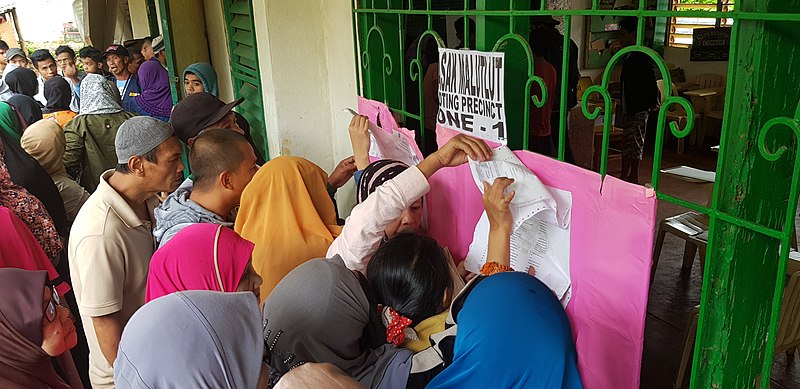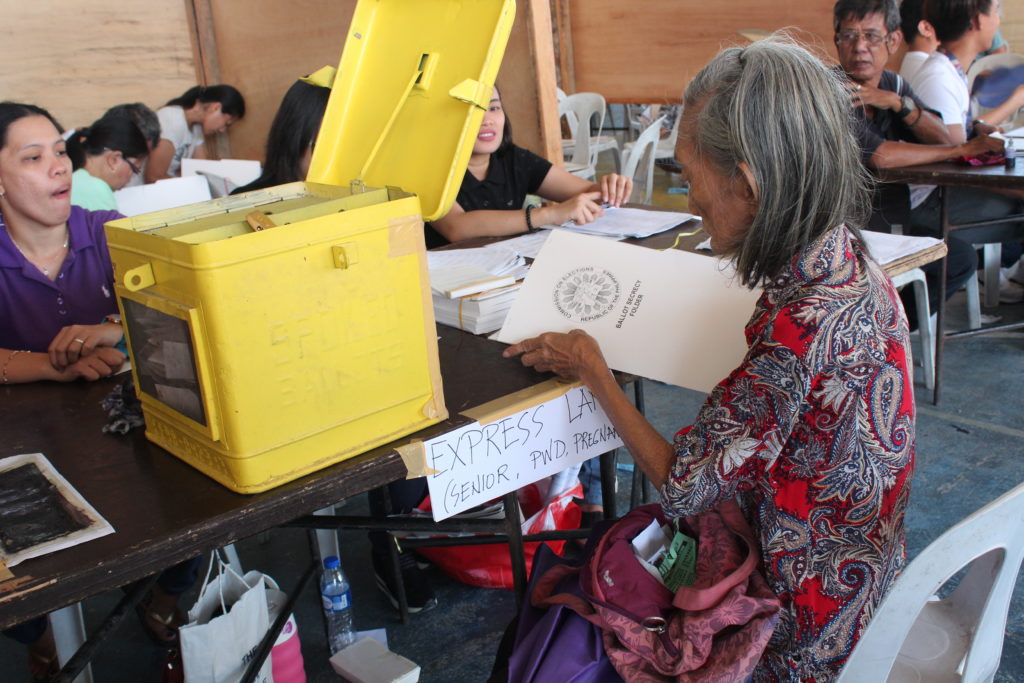In early June, at the Joint Congressional Oversight Committee (JCOC) hearing, Comelec Executive Director Jose M. Tolentino Jr. informed lawmakers on the Automated Election System that only 33 percent of the units leased “worked properly without problem” while 66 percent were not utilized due to election officers who encountered procedural problems.

Public Domain Image WikiCommons Hariboneagle927
He also mentioned that an estimated 3,900 units had “inherent defects,” according to the Philippine Center for Investigative Journalism (PCIJ).
As a way of detecting the illegal and flying voters, the Commission on Elections (Comelec) used live fingerprint verification machines in order to verify the voters in a specific precinct. According to Rappler, it is also being considered to be used in the 2022 presidential elections.

Credit: Mari Lorica
The new voter registration verification machines (VRVMs) used by the Comelec in the May 2019 polls reportedly malfunctioned with glitches that forced voters to wait before they got to cast their votes.
As stated in a written post entitled “A billion-peso blunder: 6 in 10 machines to verify voters conked out, not used at all” by the PCIJ, the data of the poll they obtained showed that of the 27,747 VRVMs used for the May 2019 polls, 18,398 (66%) of the machines “did not work at all.”
The Philippine Center for Investigative Journalism (PCIJ) tweeted this photo regarding the Voter Registration Verification Machines with the caption: “PCIJ report: 6 in 10 machines to verify voters conked out, not used at all in May 2019 Elections. Fraud-free? Fault-Free?”
PCIJ report: 6 in 10 machines to verify voters conked out, not used at all in May 2019 Elections. Fraud-free? Fault-Free? https://t.co/dznT2NWFxr pic.twitter.com/y8jk4JCmKf
— PCIJ (@PCIJdotOrg) August 13, 2019
In the article, it also states: “Of the top five provinces with the biggest deployment of VRVMs, only Pangasinan had a use rate of more than 50 percent. The rest, Cebu, Cavite, Iloilo, and Negros Occidental, had low utilization rates ranging from 15 percent to 31 percent.”
What do you think of this story? Share your thoughts with us in the comments section below!




